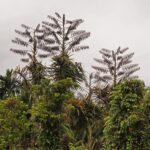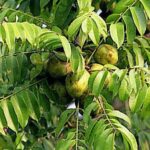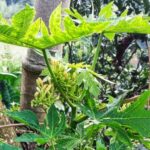Ambarella fruit (Spondias dulcis Parkinson; syn.: Spondias cytherea) is native to Melanesia and Polynesia and was introduced worldwide throughout the tropics. Its other common English names are Jew plum and Golden apple. In the Mekong Delta, it is omnipresent in orchards and gardens. Its Vietnamese name there is cóc [kawp̚˧˦]. Depending on its ripeness, the fruit tastes pleasantly sweet-sour with a hint of Mango, and its texture is like an apple’s. The only setback is its pit, which is very hard and spiny. It reaches deep into the surrounding fruit flesh, and the fruit is, therefore, difficult to eat.
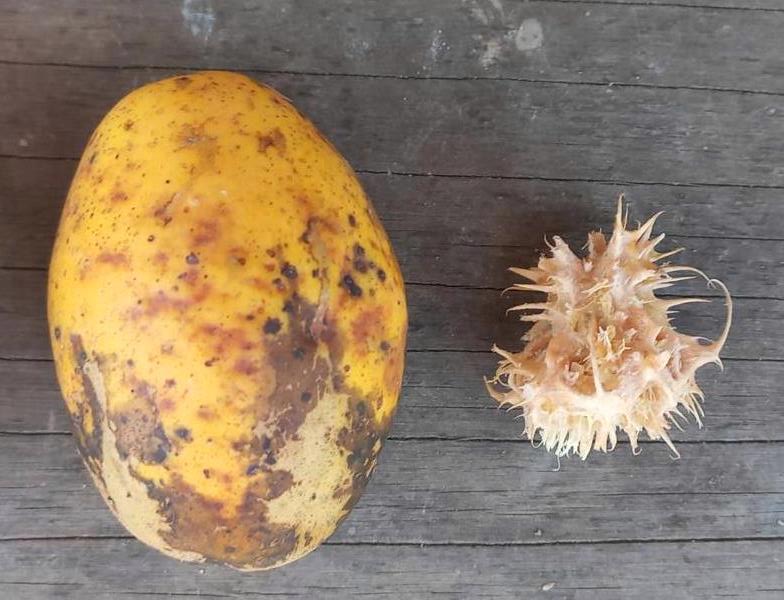
Description of the Ambarella tree and fruits
The Ambarella tree is fast-growing and reaches a height of about 15 m at the Mekong Delta. Its bark is silvery in color and has characteristic vertical bump lines on the outside.
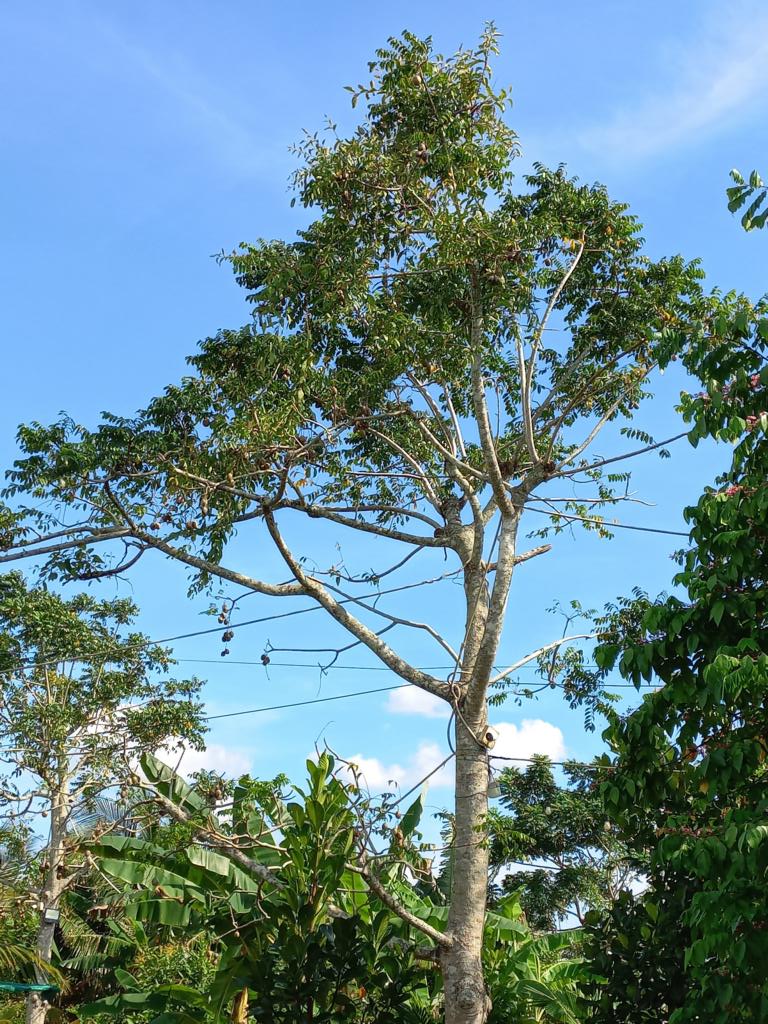
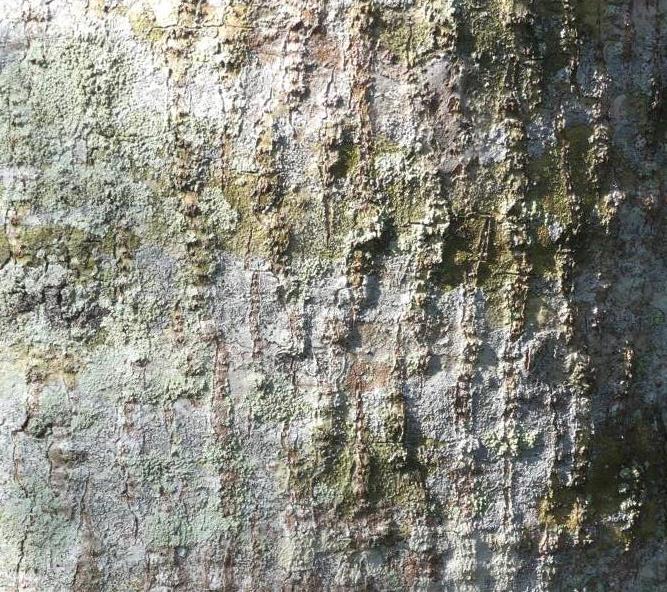
The deciduous tree has pinnate leaves composed of 9 to 25 leaflets, finely toothed toward the apex.
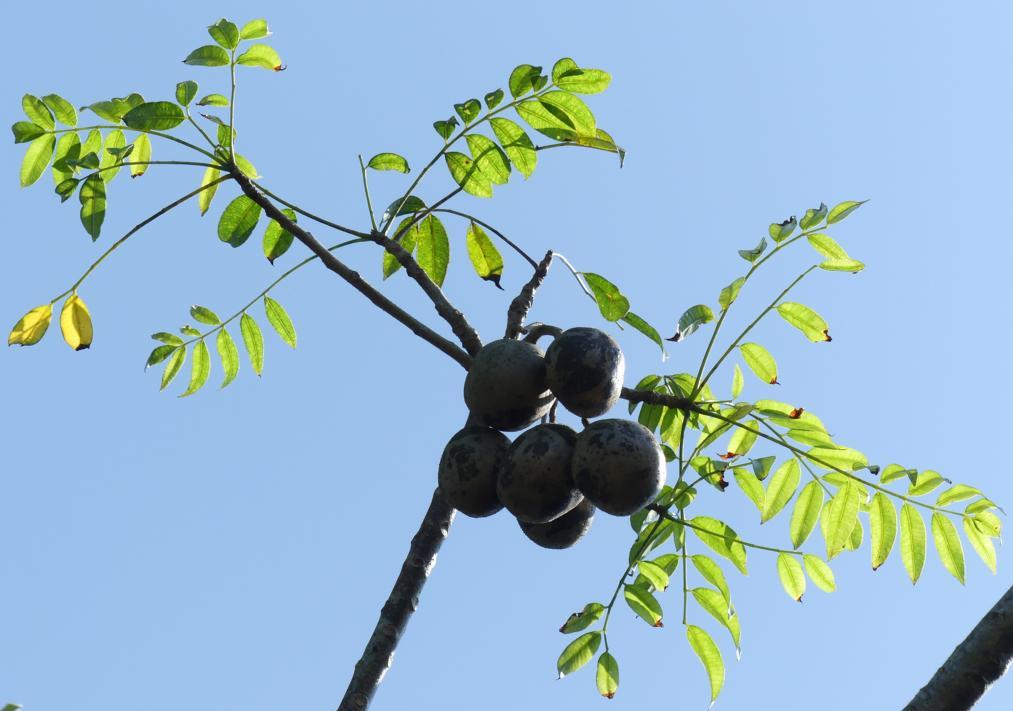
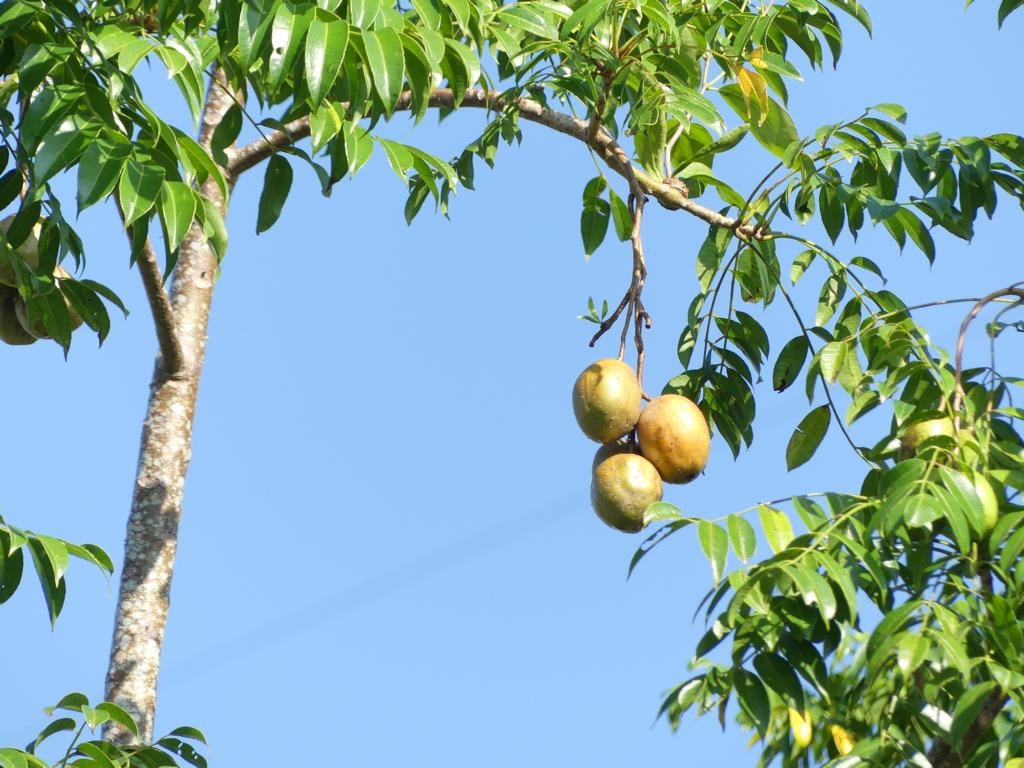
The fruits are eaten all year round. They ripen twice yearly (in October and April), then fall individually from the tree. However, unripe fruits are also harvested and eaten. Since the trees are pretty tall and the fruits are solid, a loud bang is often heard when the fruits fall to the ground.
Interestingly, mice do not feed on Ambarella fruits that fall into grass or other vegetation. However, when openly kept such fruit on a clean surface, like the deck of a hut, they will devour this fruit during nighttime.
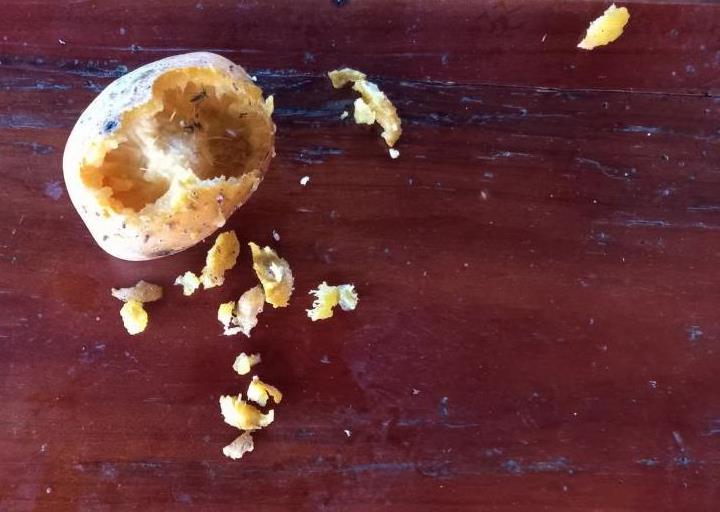
The fruits are about 6-8cm / 2 3/8-3 1/8’’ long and covered in thick, leathery skin. When cutting away a slice of skin, the stony extensions of the pit reach under the skin.
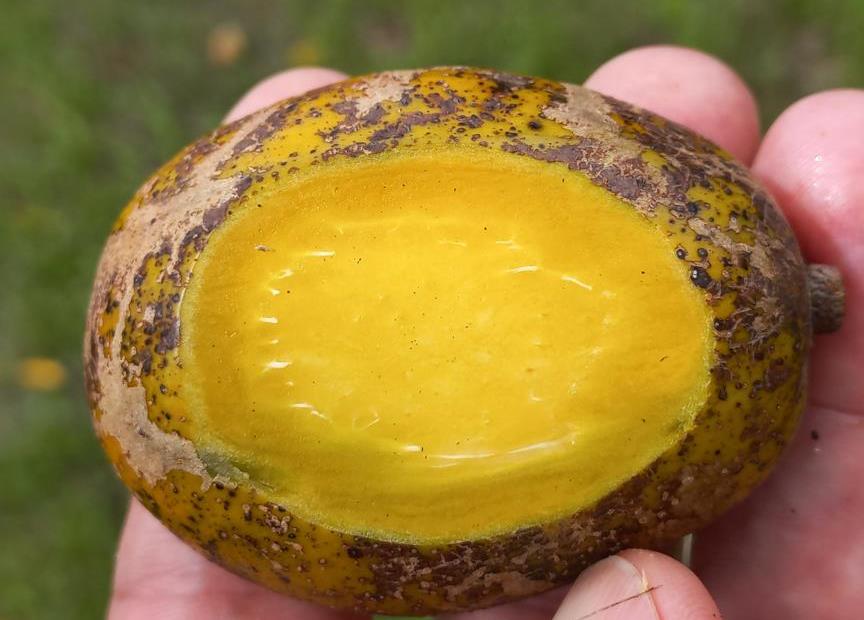
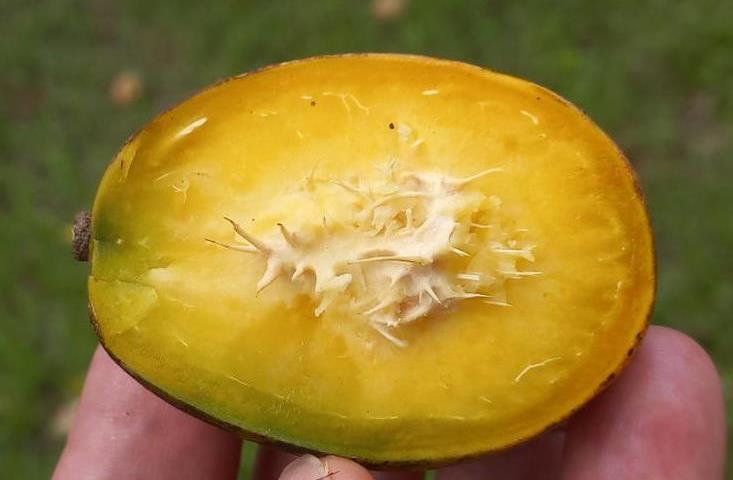
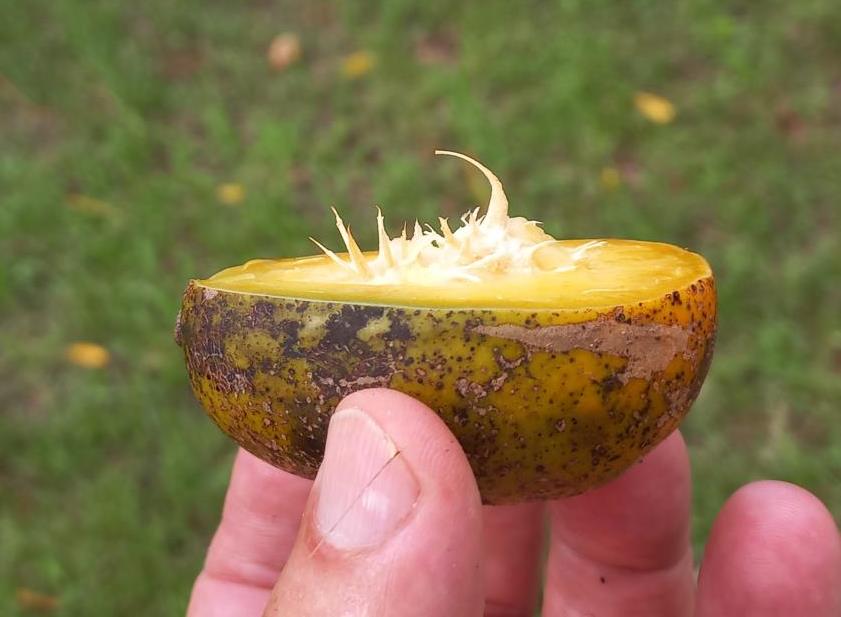
Wikipedia describes the fruit as ‘…containing a fibrous pit.’ This is not entirely correct. The fruit does not contain a fibrous pit, but the spines are integral to the stony kernel. They are similar to the bumps of peach stones, just longer and pointier.
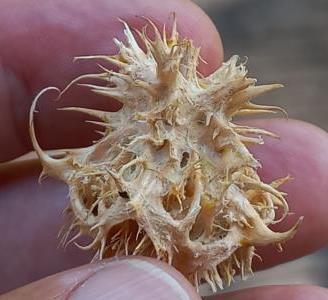
Distribution of Ambarella
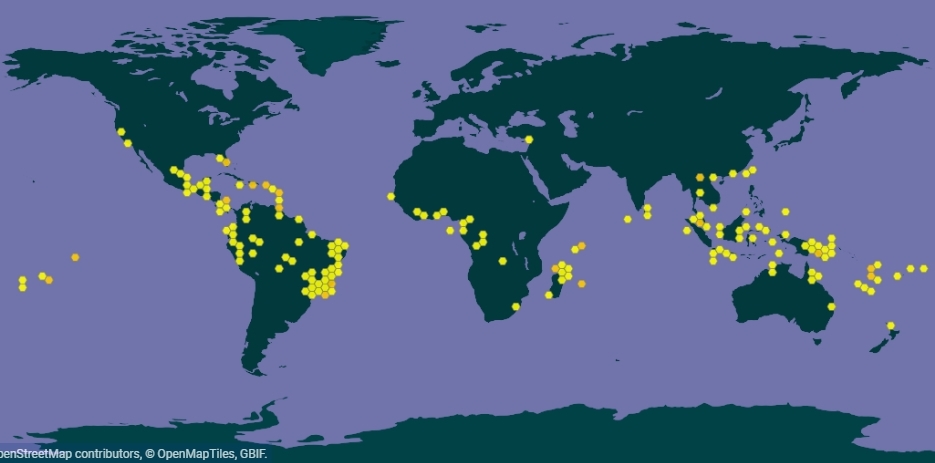
Due to its easy propagation and tasty fruits, the tree is grown throughout the global tropical belt. It was already brought to Jamaica and the Caribbean in 1782. Captain Bligh (1754-1817) introduced it to the United States of America.
Uses of the Ambarella fruit
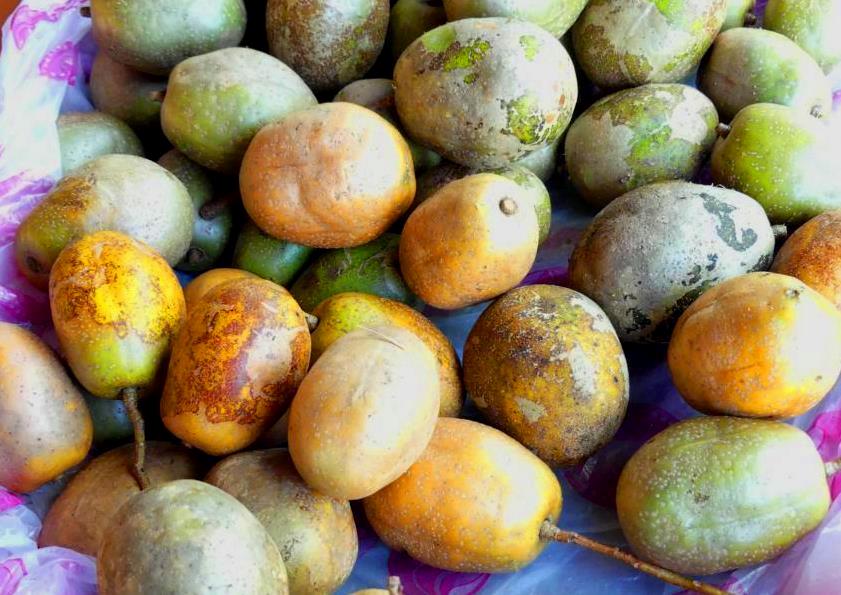
Fallen ripe fruits are initially green and turn yellow over time. They are collected daily from the ground around the trees, kept outside in the shadows, and protected from the rain. They are eaten raw by removing the skin and most of the stony pit and cutting them into handy snacks.
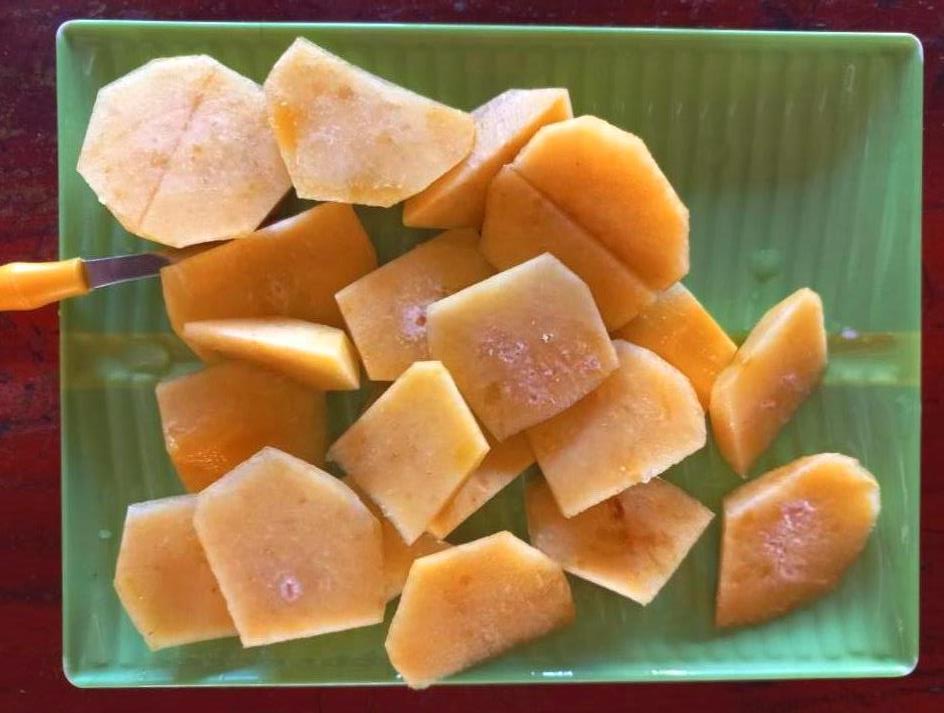
Unripe fruits are deep green and very hard. In the Mekong Delta, they are cut or grated into noodle shapes and used as a main ingredient for shrimp salads. Another way to eat them is by cutting the skinned fruit into sticks and dipping them in a mixture of sugar and chilies.
Nutritional value
According to the FatSecret webpage, 100 grams of Ambarella fruit contains 58 kcal, 0.2 grams of fat, 15 grams of carbohydrates, 0.7 grams of proteins, and 2.2 grams of Dietary fibers. For exact values, see the figures in the attached sheet.
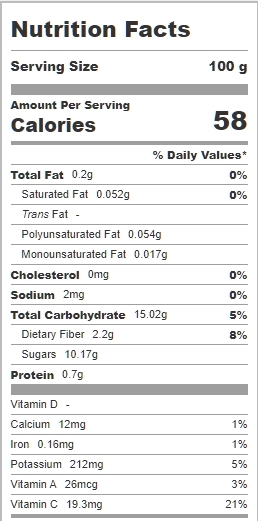
The fruits contain little calories, fat, and protein but significant amounts of carbohydrates, fiber, and vitamin C. Ambarella fruits are highly regarded, especially in Sri Lanka and India, for their various health benefits. A brief introduction to these benefits can be found here.
Lessons learned about Ambarella fruits:
- Ambarella fruits can be harvested every month of the year in the Mekong Delta of Vietnam.
- They must be skinned and cut from the spiny pit to eat raw.
- The taste is sweet-sour with a hint of Mango.
- The texture of a nearly ripe fruit is like an apple.
.



